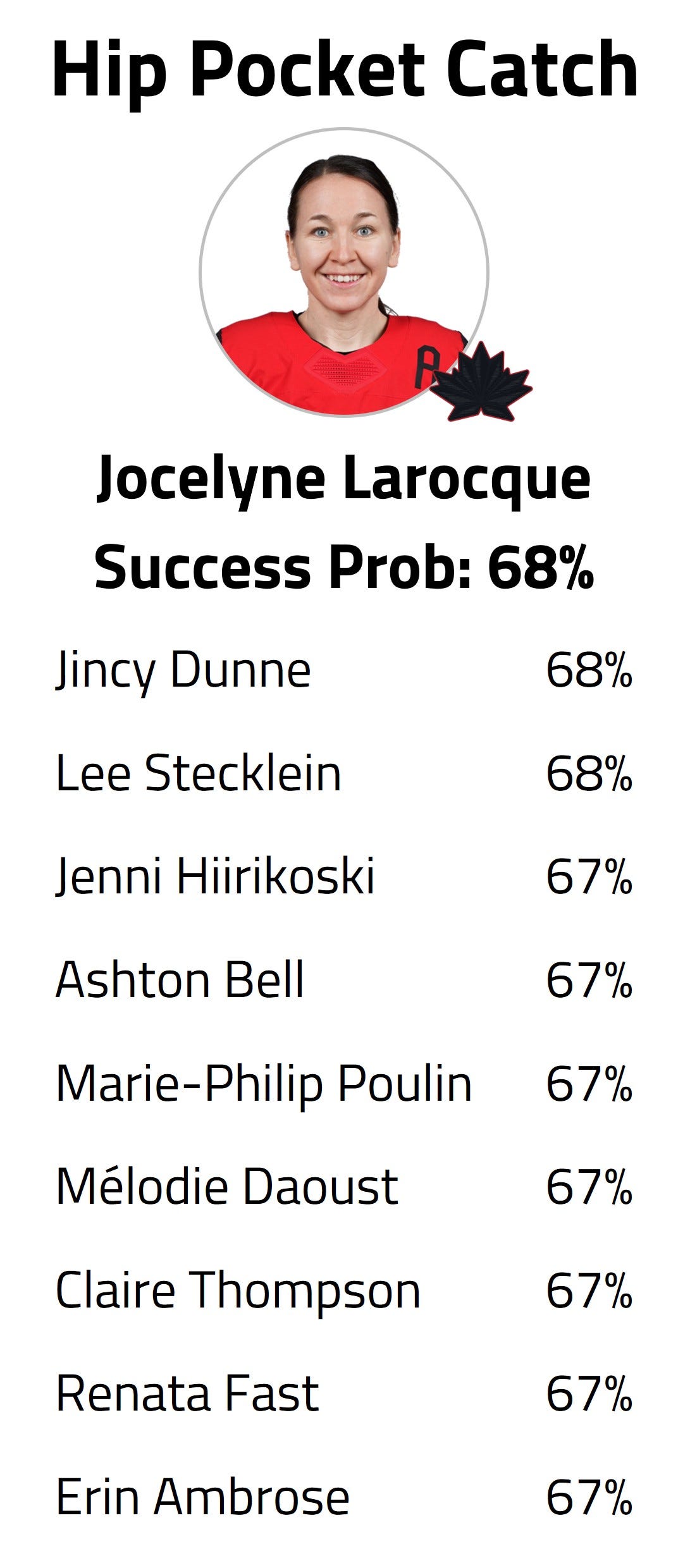Player Development: What are the hardest skills to develop?
Breaking down the 5 hardest habits to develop in women's hockey
Different players master skills to different extents. But there are some habits that are inherently more difficult to master than others.
This variation could be due to the technical difficulty of different habits in isolation. For example, being efficient when trying to tip the puck seems difficult as it requires strong hand-eye coordination (or practice thereof) in order to successfully repeat.
On the other hand, going to the net seems easier from a technical standpoint. It only requires players to skate towards the high value area, stop at the net and try to avoid getting boxed out.
The difficulty level of different habits could also be associated with the positional challenges posed by the fluid nature of hockey. In their essence, slip passes (going under opposing sticks) are not difficult to complete. But in a game of inches where players are constantly in motion, getting into position to repeatedly achieve slip passes can be challenging.
Quantifying Skill Difficulty
To quantify skill difficulty, we can use our SARAH models as a base. As part of the SARAH player development project, we had calculated the success probability of 30 different habits as a function of different micro-stats for women’s hockey players:
Using the average success probability of habits as the starting point for our calculation, we can define the difficulty level of habits as follows:
Based on this formula, we get the following results for our 30 habits ranked by difficulty level:
The 5 hardest habits to develop in women’s hockey are slip passes, unassisted stops, deception with the puck, hip pocket catches and shouldering speed. Interestingly, 3 of the 5 habits in this list (slip passes, deception and shouldering speed) were also part of the 5 habits that can most easily be blended.
When looking at the correlation between the overall SARAH score and the average of these 5 difficult habits, we obtain a strong relationship (R-squared = 0.79). In other words, the more a player masters these 5 difficult habits, the higher her overall score is likely to be.
As such, elite players who master these difficult habits, can gain an even greater competitive advantage. While elite players master habits that not many players can successfully repeat, they are also capable of blending their skills more easily which, in turn, likely results in more efficient plays in all 3 zones.
In the following sections, we will look at the list of top players for the 5 most difficult habits identified above.
Slip Passes
Defined as the ability to identify seams under the stick of opponents, slip passes are a powerful tool to distribute the puck. They can add value to a team’s possession in many different situations:
on DZ BOs, slip passes can allow defenders to beat F1 with a good first pass.
in the NZ, they can facilitate lane changes resulting in a higher volume of middle entries.
in the OZ, they can provide efficient access to the slot area to generate high danger chances.
As the hardest skill to successfully perform and the 3rd most easily blended habit, it comes as no surprise that the best player in the world, Marie-Philip Poulin, leads the pack for slip passes:
Unassisted Stops
Unassisted Stops represent a player’s ability to get out of the structure and swiftly kill plays early without opening seams in the DZ. While it is not a habit that can be blended easily, this skill is a key element I look for when analyzing the efficiency of defensive play.
For this habit, we mostly find defenders on top of the list. This intuitively makes sense as for defenders, killing plays early is crucial to limit high danger chances against when defending:
Deception with Puck
Deception with the puck is also quite important when differentiating the good from the great. Being able to pull in players or give the illusion of making a specific play can allow players to create time and space for themselves and their teammates. As such, it is one of the main habits that elite players leverage to improve the condition of the puck by stacking skills and finding creative ways to solve problems.
With her technical and physical superiority, MPP tops this list as well, closely followed by elite play drivers like Brianna Decker and Alina Müller:
Catching the Puck in the Hip Pocket
Catching the puck in the hip pocket can be achieved by letting the puck slide to the side of the body before the first touch. It may sound easy, but in practice it requires a great deal of coordination, timing and good positioning to successfully achieve.
However, when done well, it can yield significant advantages on the first touch. For example, when blended with weight transfers through a shooting motion, this habit allows for the conversion of potential energy into kinetic energy resulting in more velocity on the shot.
Shouldering Speed
Finally, shouldering speed closes the list of top-5 hardest habits. Fluid movement patterns allowing smooth transitions from one play to the next can be developed with time, as a player’s game matures. As we discussed in the last 2 posts, shouldering speed can also be blended with many playmaking and transition-related habits.
Therefore, it is not surprising to only see players above the age of 24 in the top-10, apart from Petra Nieminen (who has a very mature game at only 23 years of age):










